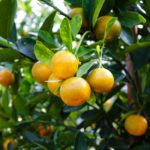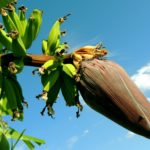Jaher Ahmed
Department of Entomology, Sylhet Agricultural University, Sylhet 3100, Bangladesh.
Mohon Nandi
Department of Entomology, Sylhet Agricultural University, Sylhet 3100, Bangladesh.
Huma Amin
Department of Plant Protection and Forest Resource,
Sustainable Forest Management Research Institute
(iuFOR), University of Valladolid, Palencia, Spain.
ABSTRACT: The
growing global concerns about ecological and health issues have raised the
necessity of managing insect pests without the use of chemical pesticides. This
fact has prompted to explore alternative methods of pest management that are efficient and environmentally sustainable. This
review highlights the advancement of biopesticides, including their
application with specificity to target pests as well as constraints and
prospects with market status. Biopesticides, which are derived from natural
sources such as plants, bacteria, fungi, and insects, provide a sustainable and
environment friendly solution for controlling pests while minimizing harm to
non-target organisms. The biopesticide market has been increasing globally, and
thousands of commercially marketed biopesticides are now used against
insect pests. Worldwide, most marketed biopesticides are derived
from several subspecies of Bacillus thuringiensis, which control diversified orders of pests, including Lepidoptera and Diptera. Although,
biopesticides have shown significant efficacy, restricted
formulation approaches have limited their overall acceptance due to lower acute
activity and a higher degradation rate. The review highlights the importance of
ongoing research, development, and regulatory support for biopesticides to a
large extent. Then, biopesticides have become a beacon of hope for a safer and
more eco-friendly approach for controlling pests.
Keywords:
Biopesticide, biopesticide market, eco-friendly management, microbial
pesticide, pest management.
REFERENCES
AHMAD, N., SARWAR,
M., KHAN, G. Z., TOFIQUE,
M. & SALAM, A. 2011. Efficacy
of some plant products and synthetic chemicals to manage the outbreak of mealy
bug (Maconellicoccus hirsutus) in
cotton. J. Agric. Biol. Sci. 3: 16-21.
ALI, S., ZAFAR, Y., ALI, M. G. &
NAZIR, F. 2008. Bacillus thuringiensis and its application in agriculture. African J. Biotechnol. 9: 2022-2031.
ARORA, N. K., KHARE, E. & MAHESHWARI, D. K. 2010. Plant growth promoting
rhizobacteria: constraints in bioformulation, commercialization, and future
strategies. In: Maheshwari DK (ed.) Plant
growth and health promoting bacteria. Pp. 97-116.
ARORA, N. K., VERMA, M., PRAKASH, J. & MISHRA,
J. 2016. Regulation
of biopesticides: global concerns and policies. In: Bioformulations for Sustainable Agriculture. Pp. 283-299.
ARTHURS, S. & LACEY, L. 2004. Field
evaluation of commercial formulations of the codling moth granulovirus:
persistence of activity and success of seasonal applications against natural
infestations of codling moth in Pacific Northwest apple orchards. Biol. Control. 31: 388-397.
ASHAOLU, C. A., OKONKWO, C., NJUGUNA, E. & NDOLO, D. 2022. Recommendations for effective and sustainable regulation of biopesticides in Nigeria. Sustainability.
14: 1-14.
BUSINESS WIRE. 2010. Research and markets:
the 2010 biopesticides market in Europe & company index – opportunities
exist which could raise the total market to $200 million by 2020. New York.
BUTU, M., RODINO, S. & BUTU, A. 2022.
Biopesticide formulations-current challenges and future perspectives. In Biopesticides. Pp. 19-29. Woodhead Publishing.
CABI. 2010. The 2010 worldwide biopesticides:
market summary. CPL Business Consultants, London. P. 40.
CAMPOS-HERRERA, R., BARBERCHECK, M., HOY, C. W. & STOCK, S. P. 2012.
Entomopathogenic nematodes as a model system for advancing the frontiers of
ecology. J. Nematol. 44: 162-176.
CHANDLER, D., BAILEY,
A. S., TATCHELL, G. M., DAVIDSON, G. & GREAVES, G. W. P. 2011. The
development, regulation, and use of biopesticides for integrated pest management. Philos. Trans. R. Soc. Lond. B.
Biol. Sci. 1573: 1987-1998.
CHANDLER, D., DAVIDSON, G., GRANT, W. P., GREAVES,
J. & TATCHELL,
G. M. 2008. Microbial biopesticides for integrated
crop management: an assessment of environmental and regulatory sustainability. Trends Food Sci.
Technol. 19: 275-283.
CHEN, D., MOAR, W. J., JERGA, A., GOWDA, A., MILLIGAN, J. S., BRETSYNDER,
E. C., … & HAAS, J. A. 2021. Bacillus
thuringiensis chimeric proteins Cry1A. 2 and Cry1B. 2 to control soybean
lepidopteran pests: New domain combinations enhance insecticidal spectrum of
activity and novel receptor contributions. PLoS
One. 16: e0249150.
CPL BUSINESS CONSULTANTS. 2010. The 2010
worldwide biopesticides market summary. 1.
CPL Business Consultants, Wallingford.
DAMALAS, C. A. & KOUTROUBAS, S. D. 2018.
Current status and recent developments in biopesticide use. Agriculture. 8: 1-6.
DUARTE, V. S., SILVA, R. A., WEKESA, V. W., RIZZATO,
F. B., DIAS, C. T. S. & DELALIBERA, J. R. I. 2009. Impact of natural epizootics of the fungal pathogen Neozygites floridana (Zygomycetes:
Entomophthorales) on population
dynamics of Tetranychus evansi (Acari:
Tetranychidae) in tomato and nightshade. Biol.
Control. 51: 81-90.
DUTTA, S. 2015. Biopesticides: An ecofriendly
approach for pest control. World Journal
of Pharmacy and Pharmaceutical Sciences (WJPPS). 4: 250-265.
EUPD (EUROPEAN UNION PESTICIDES DATABASE),
2010. European union
pesticides database.
FENIBO, E. O., IJOMA, G. N. & MATAMBO, T. 2021. Biopesticides in
sustainable agriculture: a critical sustainable development driver
governed by green chemistry principles. Front.
Sustain. Food Syst. 5: 619058.
GILL, R. J, RODRIGUEZ, O. R. & RAINE, N.
E. 2012. Combined pesticide exposure severely affects individual and colony
level traits in bees. Nature. 491: 105-108.
GLARE, T. R., GWYNN, R. L. & MORÁN-DIEZ, M. E. 2016. Development of biopesticides
and future opportunities. In: Microbial-Based
Biopesticides. Methods Molecul. Biol. 1477: 211-221.
GLARE, T., CARADUS,
J., GELERNTER, W., JACKSON, T., KEYHANI, N., KÖHL, J., … & STEWART,
A. 2012. Have biopesticides come of
age? Trends Biotech. 30: 250-258.
GLOBE NEWS WIRE. 2022b. Biopesticides market
worth $9.6 billion by 2028. Exclusive report by meticulous research. www.globenewswire.com/ newsrelease/2021/09/27/2303450/0/en/BiopesticidesMarket-Worth-9-6-
Billion-by-2028
GONÇALVES, A. L. 2021. The use of microalgae
and cyanobacteria in the improvement of agricultural practices: A Review on
their biofertilising, biostimulating and biopesticide roles. Appl. Sci. 11: P. 871.
HADDI, K.,
TURCHEN, L.
M., VITERI JUMBO, L.
O., GUEDES, R. N.,
PEREIRA, E. J., AGUIAR, R. W. & OLIVEIRA, E. E. 2020.
Rethinking biorational insecticides for pest management: unintended effects and
consequences. Pest Manag. Sci. 76: 2286-2293.
HAJEK, A. E., PAPIEROK, B. & EILENBERG, J. 2012. Methods
for study of
entomophthorales. In:
Lacey LA.
(Ed.), Manual of Techniques in Invertebrate Pathology.
Academic Press, San Diego. Pp. 285-316.
HASSAN, E. & GOKÇE, A. 2014. Production
and consumption of biopesticides. In: Advances in Plant Biopesticides. Pp. 361-379
IBRAHIM, R. A. & SHAWER,
D. M. 2014. Transgenic Bt-plants
and the future of crop
protection (an overview). Intl. J. Agric.
Food Res. 3: 14-40.
ICAMA. 2008. Pesticide manual, the institute for the control
of agrochemicals. Ministry of
agriculture, China (in Chinese).
ICOZ, I. &
STOTZKY, G. 2008.
Fate and effects
of insect resistant Bt crops in soil ecosystems. Soil Biol. Biochem. 40: 559-586.
ISLAM, M. T. & OMAR, D. B. 2012. Combined
effect of Beuveria bassiana with neem
on virulence of insect in case of two application approaches. J. Anim. Plant Sci. 22: 77-82.
ISLAM, M. T., CASTLE, S. J. & REN, S.
2010. Compatibility of the insect pathogenic fungus Beauveria bassiana with neem against sweet potato whitefly, Bemisia tabaci, on eggplant. Entomologia Experimentalis et Applicata.
134: 28-34.
ISMAM, M. B. 2008. Botanical insecticides:
for richer, for poorer. Pest Manage, Sci:
Formerly Pesticide Sci. 64:
8-11.
ISMAN, M.
B. 2020. Botanical insecticides in the
twenty-first century fulfilling their promise. Ann. Rev. Entomol. 65: 233-249.
JANKIELSOHN,
A. 2018. The importance of insects in agricultural ecosystems.
Advan. Entomol. 6: 62-73.
JOHNSON, V. W., PEARSON, J. F. & JACKSON, T. A. 2001. Formulation of
Serratia entomophila for biological control of
grass grub. In: Proceedings of the
New Zealand Plant Protection Conference. New Zealand Plant Protection. 54: 125-127.
JURAT-FUENTES, J. L. & JACKSON, T. A.
2012. Bacterial entomopathogens. In: Insect Pathology, second ed. Academic
Press, San Diego. Pp. 265-349.
KABALUK, J. T., SVIRCEV, A. M., GOETTEL,
M. S. & WOO, S. G. (EDS.).
2010. The use and regulation of microbial
pesticides in representative jurisdictions worldwide. 99. St. Paul, MN, USA: International Organization for Biological Control of Noxious Animals and
Plants (IOBC).
KOPPENHOFER,
A. M., JACKSON, T. A. & KLEIN, M. G. 2012. Bacteria
for use against soil inhabiting insects.
In: Lacey LA (Ed.), Manual of Techniques in Invertebrate Pathology. Academic Press, San Diego. Pp.
129-149.
KUMAR, J.,
RAMLAL, A., MALLICK, D. & MISHRA, V. 2021. An overview of some biopesticides and
their importance in plant protection for commercial acceptance. Plants. 10: 1185.
KUMAR, S. & SINGH, A. 2015.
Biopesticides: Present status and the future prospects. J. Fertil. Pestic. 6:
1-2.
LACEY, L. A., LIU, T. X., BUCHMAN, J. L., MUNYANEZA, J. E., GOOLSBY,
J. A. & HORTON, D. R. 2011. Entomopathogenic fungi (Hypocreales)
for control of potato psyllid, Bactericera
cockerelli (Sulc) (Hemiptera: Triozidae)
in an area endemic for zebra chip disease of potato. Biol. Control. 36: 271-278.
LEHR, P. 2010. Biopesticides: the Global Market, Report code CHM029B, BCC Research.
LENG, P., ZHANG, Z., GUANGTANG,
P. & ZHAO, M. 2011. Applications and development trends in biopesticides. African J. Biotechnol. 10: 19864- 19873.
LENGAI, G. M. W. & MUTHOMI, J. W. 2018.
Biopesticides and their role in sustainable agricultural production. J. Biosci. Method. 6: 7-41.
LIAO Y. 2020. Residual Governmentality:
Pesticide Policing in Neo-socialist China. The
Asia Pacific Journal of Anthropology. 21:
416-433.
MARKET DATA FORECAST. 2022. Europe
Biopesticide Market by Crop Type (Permanent Crops, Arable Crops, Forage & Turf Grasses, Greenhouse Crops) by
Ingredients (Biochemical Pesticides, Plant Pesticides and Microbial Pesticides)
by Microorganism’s Type (Bioherbicides, Bio fungicides, Bionematicides and
Bioinsecticide), by Application (Seed Treatment, on Farm and Post-Harvest) and
by Region – Industry Analysis, Size, Share, Growth, Trends, and Forecasts (2022
to 2027). www.marketdataforecast. com/marketreports/europe-bio-pesticide-market.
MARKETS & MARKETS. 2022. Biopesticides
Market by Type (Bioinsecticides, Biofungicides, Bionematicides, and
Bioherbicides), Source (Microbials, Biochemicals, and Beneficial Insects), Mode
of Application, Formulation, Crop Application, and Region – Global Forecast to
2025. www. marketsandmarkets.com/Market-Reports/biopesticides-267.html.
MARKETS & MARKETS.
2012. Global Biopesticides Market – Trends & Forecasts
(2012–2017); Report Code: CH 1266.
MARRONE, P. G. 2007. Barriers to adoption of
biological control agents and biological pesticides, CAB reviews: perspectives
in agriculture, veterinary science, nutrition, and natural resources. 2. CAB
International, Wallingford.
MARRONE, P. G. 2009. Barriers to adoption of
biological control agents and biological pesticides. Integrated Pest Manage. Pp. 163-178.
MARRONE, P. G. 2014. The market and potential for biopesticides. In Biopesticides: state of the art and future
opportunities. 245-258. American
Chemical Society.
MARRONE, P. G. 2024. Status of the
biopesticide market and prospects for new bioherbicides. Pest Manage. Sci. 80:
81-86.
MASHTOLY, T. A., ABOLMAATY, A., ELZEMAITY, M., HUSSIEN, M. I. & ALM,
S. R. 2011. Enhanced toxicity of Bacillus
thuringiensis subspecies kurstaki and
aizawai to black cutworm
larvae (Lepidoptera: Noctuidae) with Bacillus sp.
NFD2 and Pseudomonas sp. FNFD1. J. Econ. Entomol. 104: 41-46.
MASHTOLY, T. A., ABOLMAATY, A., THOMPSON, N.,
EL-SAID, ELZEMAITY, M., HUSSIEN,
M. I. & ALM, S. R. 2010.
Enhanced toxicity of Bacillus thuringiensis japonensis strain Buibui
toxin to oriental
beetle and northern masked chafer (Coleoptera: Scarabaeidae) larvae with Bacillus sp.
NFD2. J. Econ. Entomol. 103: 1547-1554.
MATYJASZCZYK, E. 2015. Products containing
microorganisms as a tool in integrated pest management and the rules of their
market placement in the European Union. Pest
Manag. Sci. 71: 1201-1206.
MOOSAVI, M. R. & ZARE, R. 2015. Factors
affecting commercial success of biocontrol agents of phytonematodes. Biocontrol Agents Phytonematodes. 1: 423-445.
MORALES-RAMOS, J. A., ROJAS,
M. G. & SHAPIRO-ILAN, D. I. (ed.).
2013. Mass production of beneficial organisms: invertebrates and entomopathogens. Academic
Press.
MOSHI, A. P. & MATOJU, I. 2017. The
status of research on and application of biopesticides in Tanzania. Review. Crop protection. 92: 16-28.
NAWAZ, M., MABUBU, J. I. & HUA, H. 2016.
Current status and advancement of biopesticides: Microbial
and botanical pesticides. J. Entomol. Zool. Stud. 4: 241-246.
NBAIR. 2017a. ICAR-National Bureau of Agricultural Insect Resources, Newsletter, September 2017, Bengaluru, India. 9: 4.
OLSON, S. 2015. An analysis
of the biopesticide market now and where is
going. Outlooks Pest Manage. 26: 203-206.
https://doi.org/10.1564/v26_ oct_04.
PANAZZI, A. R. 2013. History and contemporary
perspectives of the integrated pest management of soybean in Brazil. Neotrop. Entomol. 42: 119-127.
PANDYA, I. Y. 2018. Pesticides and their applications in agriculture. Asian J. Appl. Sci.
Technol. 2: 894-900.
PUCCI, J. 2022. Brazil sets the pace for
biologicals in row crops. Agribusiness Global
https://wwwagribusinessglobalcom/biologicals/brazil-setsthe-pace-
for-biologicals-in-row-crops/ (August 9, 2022).
R CORE TEAM.
2021. R: A language and environment for statistical computing. R Foundation for Statistical Computing, Vienna, Austria.
URL https://www.R- project.org.
RAJPUT, V. S., JHALA, J. & ACHARYA, V.
2020. Biopesticides and their mode of action against insect pests: A review. Int’l J. Chem. Stud. 8: 2856-2862.
RAKSHIT, A., MEENA, V. S., ABHILASH, P. C., SARMA, B. K., SINGH, H. B.,
FRACETO, L., PARIHAR, M. & KUMAR SINGH,
A. 2021. Biopesticides:
Advances in Bio-Inoculants; Woodhead Publishing: Cambridge, UK. 2.
RAMÍREZ-GUZMÁN, N., CHÁVEZ-GONZÁLEZ, M.,
SEPÚLVEDA-TORRE, L., TORRES-LEÓN, C., CINTRA, A., ANGULO-LÓPEZ, J., MARTÍNEZ- HERNÁNDEZ,
J. L. & AGUILAR, C. N. 2020. Significant advances in biopesticide production: Strategies for high-density bio-inoculant cultivation.
In: Microb. Serv. Restor. Ecol. Pp. 1-11.
RANI, A. T., KAMMAR,
V., KEERTHI, M. C., RANI, V., MAJUMDER,
S., PANDEY, K.
K. & SINGH, J.
2021. Biopesticides: an alternative to synthetic insecticides.
Microb. Technol. Sustain. Environ. Pp.
439-466.
RESEARCH & MARKETS. 2022. Biopesticides
Market: Global Industry Trends, Share, Size, Growth, Opportunity and Forecast.
2021-2026.
ROWLEY, D. L., POPHAM, H. J. R. & HARRISON, R. L. 2011.
Genetic variation and virulence of
nucleopolyhedroviruses isolated worldwide from the heliothine pests Helicoverpa armigera, Helicoverpa zea and
Heliothis virescens. J. Invertebr. Pathol. 107: 112-126.
RUIU, L. 2018. Microbial Biopesticides in
Agroecosystems. Agronomy. 8, 235. https://doi.org/10.3390/agronomy8110235.
SALMA, M., RATUL, C. R. & JOGEN, C. K.
2011. A review on the use of biopesticides in insect pest management. Int. J. Sci. Adv. Tech. 1: 169-178.
SAMADA, L. H. & TAMBUNAN, U. S. F. 2020.
Biopesticides as promising alternatives to chemical pesticides: A review of
their current and future status. Online
Jr. Biol. Sci. 20: 66-76.
SARWAR, M. 2015. Biopesticides: an effective and environmentally friendly insect-
pests inhibitor line of action. Intl. J. Engin. Adv. Res. Technol.
1: 10-15.
SCHOLTE, E. J., TAKKEN, W. & KNOLS, B. G.
2007. Infection of adult Aedes aegypti and
Ae. albopictus mosquitoes with the
entomopathogenic fungus Metarhizium
anisopliae. Acta tropica. 102: 151-158.
SEHRAWAT, A. & SINDHU, S. S. 2019.
Potential of biocontrol agents in plant disease control for improving food
safety. Def. Life Sci, J. 4:
220-225.
SEIEDY, M., TORK, M. & DEYHIM, F. 2015.
Effect of the entomopathogenic fungus Beauveria bassiana
on the predatory mite Amblyseius swirskii
(Acari: Phytoseiidae) as a nontarget organism. System.
Appl. Acarol. 20: 2451-250.
SHI, W. B. & FENG,
M. G. 2004. Lethal effect
of Beauveria bassiana, Metarhizium anisopliae, and Paecilomyces fumosoroseus on the eggs of
Tetranychus cinnabarinus (Acari:
Tetranychidae) with a description of a mite egg bioassay system. Biol. Control. 30: 165-173.
SHISHIR, A., AKTER,
A., HASSAN, M. H., KIBRIA,
G., ILIAS, M., KHAN, S. N. & HOQ, M. M. 2012.
Characterization of locally isolated Bacillus
thuringiensis for the development of eco-friendly biopesticides in
Bangladesh. J. Biopest. 5: 216.
SINGH, P. & MAZUMDAR, P. 2022. Microbial
pesticides: trends, scope and adoption for plant and soil improvement. In: Biopesticides. Pp. 37-71. Woodhead
Publishing.
SINHA, K. K., CHOUDHARY, A. K. & KUMARI, P. 2016. Entomopathogenic fungi. In: Omkar (Ed.), Ecofriendly Pest Management for Food
Security. Academic Press, Cambridge, Edmonton, Alberta. Pp. 475-505.
https://doi. org/10.1016/B978-0-12-803265-7.00015-4.
STEHLE, S. & SCHULZ, R. 2015. Agricultural insecticides threaten surface
waters at the global scale. Proc.
Natl. Academy Sci. 112:
5750-5755.
THAKRE, M., THAKUR,
M., MALIK, N. & GANGER,
S. 2011. Mass scale cultivation of entomopathogenic
fungus Nomuraea rileyi using
agricultural products and agro wastes. J.
Biopest. 4: 176-179.
TOFANGSAZI,
N., ARTHURS, S. P. &
DAVIS, R. M. G. 2015.
Entomopathogenic Nematodes (Nematoda: Rhabditida:
families Steinernematidae and Heterorhabditidae). one of a series of the
Entomology and Nematology Department, UF/IFAS Extension. Pp. 1-5.
TOWNSEND,
R. J., NELSON, T. L. & JACKSON,
T. A. 2010. Beauveria brongniartii–a potential biocontrol agent for use against manuka
beetle larvae damaging dairy pastures on cape foul wind. N. Z. Plant Protect. 63: 224-228.
USEPA. 2011. Pesticide
news story: EPA releases report containing latest estimates
of pesticide use in the United States, USA.
VEKEMANS, M. C. & MARCHAND, P. A. 2020.
The fate of biocontrol agents under the European phytopharmaceutical
regulation: how this regulation hinders the approval of botanicals as new
active substances. Environ. Sci. Pollut.
Res. Intl. 27: 39879-39887.
WILLER, H. & LERNOUD, J. 2017. The World
of Organic Agriculture. Statistics and Emerging Trends, 2017. Research
Institute of Organic Agriculture (FiBL) Frick, Switzerland. BIOFACH. Pp. 38.
Accessed 7 March 2018. http://orgprints.org/31197/1/ willer-lernoud-2017-global-data-biofach.pdf.
YANG, M. M., LI, M. L., ZHANG, Y., WANG, Y.
Z., QU, L. J., WANG, Q. H. & DING,
J. Y. 2012. Baculoviruses and insect pests control in China. Afr. J. Microbiol. Res. 6: 214-218.
ZHANG, L. & LECOQ, M. 2021. Nosema locustae (Protozoa,
Microsporidia), a biological agent for locust and grasshopper control. Agronomy. P. 11: 711.






